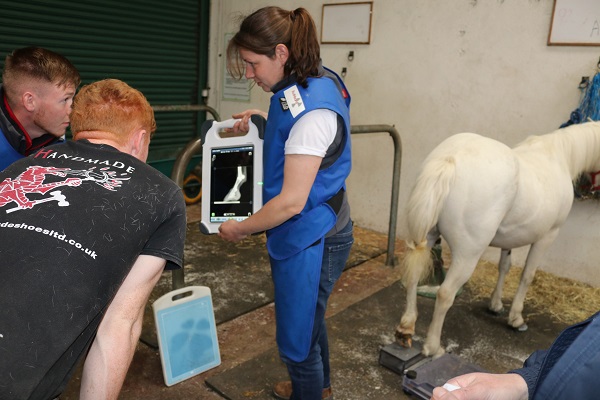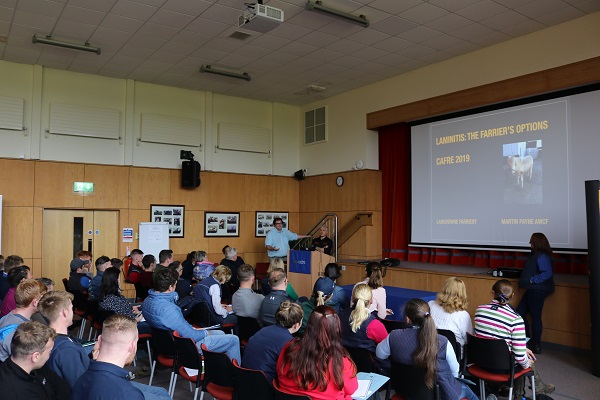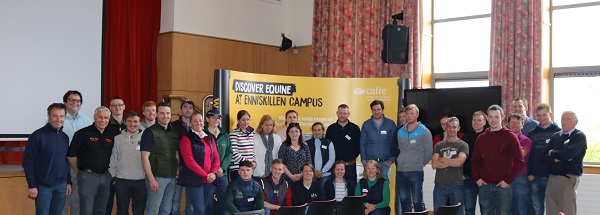Laminitis Seminar at CAFRE
June 25, 2019
CAFRE Enniskillen Campus was the recent host of a very interactive and informative seminar on Equine Laminitis. The College was extremely lucky and grateful to get a great line up of experts from both the veterinary and farriery worlds as well as having an enlightening presentation on dietary management by Dengie nutritionist Tracey Hammond (MSc). This lead to a detailed but interactive day with a variety of talks in the morning on the cause, diagnosis and management of the problem with a lively discussion between vets, owners and farriers.

Veterinarian and farrier Quirine Tettelaar showing the importance of correct diagnosis
The most current figures are that 10-15% of horses will suffer from laminitis every year (ECIR, 2017) as there are estimated to be approximately 35,600 horses and ponies in Northern Ireland (DARD, 2007) this indicates that 3,560-5,340 equines could be affected annually by the condition. There are major welfare implications regarding the vital role caregivers and technical staff have with regards to their ability to recognise the importance of diagnosis, management and therapeutic options. Veterinarian Sean Rooney (BVSc MRCVS) discussed the causes of laminitis and how the owner and vet can work hand in hand to tackle the issues. Veterinarian and Farrier Quirine Tettelaar (MVetMed MRCVS, AFA) also highlighted the causes of laminitis and what the vet can identify with the help of diagnostics. Tracey Hammond gave an illuminating talk on how to manage your horse’s diet, especially the roughage / turn out elements. Finally Martin Payne (AWCF) discussed the ‘hands on’ element of farriery and the variety of options available to them.

Delegates participating in a lively discussion about the important roles of the farrier and the vet
After lunch the practical element of the day commenced with live streaming of close up farriery work carried out by Martin Payne (AWCF) and Paul Duddy (AWCF) which was linked to before, during and after X-rays. The audience were able to feel what a strong digital pulse felt like, which will aid them in identifying laminitis in the future, and see in real time the difference linking both the farrier and the vet can make on the prognosis of each case. Quirine called on both her veterinary and farrier skills to show how linking diagnostics to the farriery work can drastically improve the outcome. With the use of venograms Quirine was able to show how the blood flow within the foot may be compromised by the disease and answer any questions the audience had on each case.

Horse owners, farriers, instructors, coaches and industry professionals made up the delegation at the seminar
After such a successful educational day the college would like to thank the hard work and dedication of the presenters and the generosity and patience of the horse and pony owners who supported the event.
